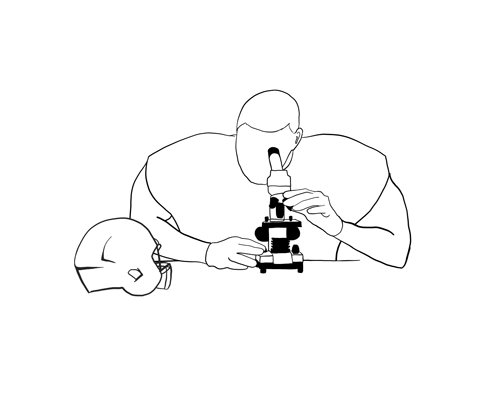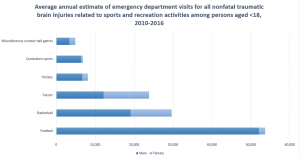By Eric David, PhD Student
For as long as I can remember, the Texas summer heat indicated the onset of two-a-day’s and the beginning of football season. Practice would begin early, but the morning breeze would quickly end as the August sun rose, and the suffocating heat would expose a divide between those that had prepared for the year and those that ended up in a corner paying for their summer sins in vomit.
Our coaches would blast music over our heads from speakers just a few dozen yards away. This served to deaden our senses, muting the part of our brain telling us to stop. As the days progressed, we transitioned into “full pad” which would only further delineate the weak and the strong. Some days you were the hammer and some days the nail, and when tensions inevitable rose, having eyes in the back of your head was useful. The violence was subtly encouraged and having the ability to push 300lb men into the ground through sheer will and strength was a testament to our training. These were the summers I knew.
Despite never missing a game, in the summer of 2018 I found myself in Lenox Hill hospital in New York City with sepsis and had part of my finger removed due to cellulitis. I was hospitalized and received I.V. antibiotics for an osteomyelitis infection of the hand for over 12 weeks. This happened as I had come off an all-conference season in my third year and was selected as a pre-season all-American. However, I wasn’t allowed to compete until the season was underway, and it seemed all for naught, as we had the worst season in over nine years. Athletes everywhere always face the risk of injury and this is particularly true for football. Furthermore, injury alone isn’t the biggest threat. It is the long-lasting affect, both physically and mentally, of injuries that are most troublesome. In fact, a 2017 study found that D1 athletes participating in a collision sport experienced a lower health related quality of life in their later years than non-injured athletes and non-athletes.[1]
Many of my friends now live with sciatica conditions, improper knee surgeries, brain trauma, and worn down joints. Many of these athletes (including myself) had been playing football since elementary school and have experienced an untold damage that we are only just now understanding. In a 2007 survey of retired NFL athletes, researchers found that nearly half of all respondents (n=1617) reported that difficulty with pain was “very common” or “quite common”.[2] Alarmingly, many of these people also suffered from depressive symptoms and the prevailing theory seems to indicate that depression typically follows from the severity of pain that people experience.
From a player’s perspective we know that each athlete on the field is unique to their assignment and coaches design game strategies on a “mismatch” between two athletes. Differences in height and weight are noted and Newton’s second law of physics cannot be disproven, as the person with the most force produced will win. This results in thousands of chances to be injured and the continual hitting that occurs creates thousands of asymptomatic micro concussions. Over four years of D1 football, I witnessed players have behavioral changes such as irrational anger and deteriorating decision making that are now part of the known symptoms of suffering from micro concussions, except it’s happening decades before it should. These conditions led players into quitting and are no longer continuing a career in sports. In one case, an offensive lineman that had a promising future at the next level was forced to retire from athletics after suffering a bulging disk in his lower spinal column. Sadly, they would not be the only example.
This is an issue not confined to the program I was in, or the sport, but a systemic problem for athletics as a whole. Student-athletes spend hours perfecting a craft, and in doing so wear their joints down, or suffer severe accidents that leave them needing years of physical therapy. A culture of aggression and persecution are simultaneously reinforced, leading to extreme behaviors that leak into our daily life. A 2015 study noted “that the regular hits taken by offensive linemen are leading to more-frequent postimpact symptoms than other positions, but are more frequently left unreported, possibly due to their routine nature”.[3] Often, the “manliness” of football is so ingrained that players were encouraged to play through hits that caused dizziness and other symptomatic conditions of concussion.
Due to these experiences and my familiarity with injury and pain, I have transitioned to a PhD program to pursue my interest in chronic pain research. I now more fully understand how our bodies can deteriorate over time, leading to the release of molecules that cause the chronic pain that we can see in some athletes. My goal is to study the hormonal influences on the pain regulation pathway in the nervous system and contribute to the understanding of how this occurs and how we can help athletes that live with chronic pain, just as my friends and I do today.
[1] https://www.ncbi.nlm.nih.gov/pmc/articles/PMC4852526/#i1062-6050-51-3-205-b45


